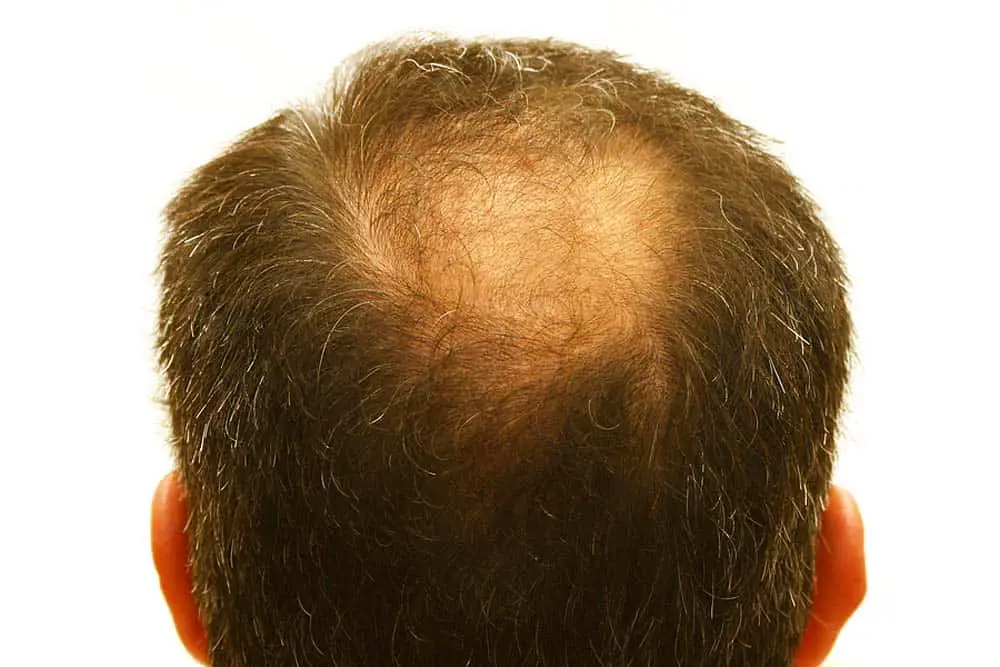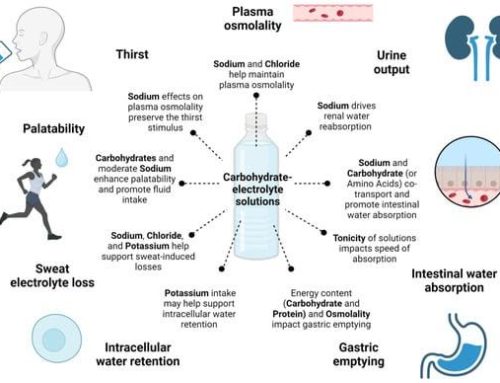Are you suffering from hair loss? You’re not alone.
Some 80 million people in the United States alone suffer from a type of hair loss called androgenetic alopecia, which has been linked to high levels of a hormone (known as DHT) in the body.
Thankfully, there are ways to lower DHT levels. These include diet, exercise, lifestyle changes, herbal DHT blockers, special shampoos, scalp exfoliation, and various medications.
Coming up, we’ll walk you through everything you need to know about DHT and clue you into some of the top ways to reduce DHT levels in the body.
What Is DHT?
DHT, or dihydrotestosterone, is a type of androgen, a category of sex hormone. It is derived from testosterone, which is one of the primary sex hormones. Approximately 10% of all the testosterone in an adult body is converted into DHT, in a process using an enzyme known as 5-AR (5-alpha reductase).
Although both DHT and testosterone are associated with male development, Harvard Medical School notes that they are found at various levels in all humans. One rare exception to this is people who have androgen insensitivity syndrome, as these individuals have testosterone, but their body cannot respond to it.
According to the Hormone Health Network, DHT plays a vital role in male puberty as it helps trigger the development of pubic hair, body hair, the prostate, and the genitals. While more research is needed, there is evidence that suggests DHT might also stimulate the start of puberty and pubic hair development during female puberty. In adults, high DHT levels are also linked to improved muscle mass, sexual health, and fertility.
Problems Related To DHT
While DHT is a normal hormone (essential for human development), it can cause many problems when found at very high levels.
According to Harvard Medical School, when too much testosterone converts into DHT, it can cause issues such as:
- Acne over large sections of the skin
- Hair growth on the chest
- Androgenic alopecia (a.k.a. male pattern baldness)
- Growth of prostate cells (including benign prostatic hyperplasia)
Although the link between DHT and prostate cancer isn’t fully known, there is quite a bit of evidence that suggests high levels of DHT are behind many types of baldness that develop later in life.
How To Reduce DHT Levels
Since most people don’t typically want to lose their hair, finding ways to reduce DHT levels in the body is a popular way to limit the development of androgenic alopecia (male pattern baldness).
However, keep in mind that you should discuss the following options with your doctor to decide which methods are right for your needs.
Diet & Eating Habits
It turns out that there are many DHT blocking foods. When consumed as part of a well-rounded diet, there is some evidence that these foods can lower DHT in the body.
There are 3 main compounds in food that are linked to lower DHT production:
- Phytosterol – Phytosterols are naturally found in many zinc-rich vegetables and plants. This compound is linked to both lower levels of LDL cholesterol (bad cholesterol) as well as lower levels of DHT. You can find phytosterols in foods such as spinach, kale, mushrooms, nuts, seeds, and beans.
- Lycopene – Lycopene is a nutrient found in many plants. It has antioxidant properties and is responsible for the red color that you see in some fruits. There is some evidence that lycopene can help lower DHT levels. Lycopene-rich foods include carrots, mangoes, watermelons, and tomatoes.
- Biotin – Biotin, also known as vitamin H, helps to maintain your body’s levels of keratin. Keratin is a protein found in our hair, skin, and nails, though it’s not entirely clear how consuming biotin helps increase your keratin levels. One study did find that biotin helps promote hair growth and prevent hair from falling out. Biotin is available as an OTC supplement in most countries and can also be found in foods like bananas, oily fish, liver, berries, and legumes.
Lifestyle Changes
Cornell University noted that leading a healthy lifestyle can help slow down DHT-related hair loss. Maintaining a nutritious diet, quitting smoking, exercising regularly, cutting back on alcohol, and getting enough sleep can help regulate your body’s natural DHT levels.
Cornell also recommends cutting back on creatine supplements and anabolic steroid use, which are linked to DHT level fluctuations, among other issues.
DHT Blockers
DHT blockers have been linked to a reduction in hair loss in some situations. These blockers work by stopping DHT production within the body. As a result, these blockers can sometimes prevent further hair loss.
There are multiple types of DHT blockers out there, including medications, shampoos, and herbal supplements.
- DHT Blocker Medications – There are quite a few different DHT blocking medications available. These include Finasteride and Minoxidil, both of which are prescription only.
- DHT Blocker Shampoo – DHT blocker shampoos are becoming more and more popular because they can be purchased over the counter. They contain various compounds, like pumpkin seed oil and azelaic acid, which may remove DHT from the scalp. However, there’s no definitive evidence that these shampoos are effective.
- Herbal DHT Blockers – Various herbal remedies, such as pygeum bark and pumpkin seed oil, have been linked to lower DHT levels. Similar to DHT blocker shampoo, there’s no definitive evidence that these remedies work. But, they have been linked to increased hair growth in some small-scale studies.
If you think any of these medications or supplements might be right for you, be sure to consult with your physician before starting. This is true even if these supplements are available over the counter as they may interact with your other medications.
It’s also worth noting that DHT blockers have side effects, which can include erectile dysfunction, rashes, vomiting, facial hair thickening, and excess fat development. Therefore, anyone considering these medications should be well aware of the risks before starting treatment.
Scalp Exfoliation
Scalp exfoliation is a simple process that most people can do at home to reduce DHT on the scalp. Although there’s no direct evidence that exfoliation removes substantial quantities of DHT, it does generally help encourage healthy hair.
You can exfoliate your scalp right after you shampoo, as long as your hair is still wet. Once you comb your hair, you can apply an exfoliation scrub to your scalp and rub it in using a circular motion.
In general, people should limit scalp exfoliation to just once or twice a week. This is because over-exfoliating can strip the scalp of too much of its natural oils. It can also make your scalp overly sensitive.
Medications
When it comes to medication, please be sure to always consult with your doctor. With that said, finasteride is one available option that tends to show results with patients. In long-term, placebo-controlled trials, as much as 90% of men who used finasteride (and were suffering from hair loss) either saw improvement in their hair growth or maintained their hair.
Final Thoughts
DHT is naturally produced in the body, but at very high levels, it may lead to hair loss. There are several different ways to block DHT and regrow hair naturally, though it’s best to consult your doctor before starting any treatment options.








Leave A Comment